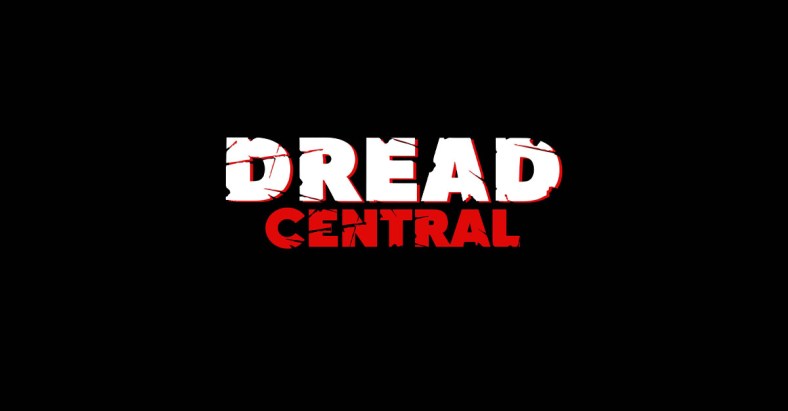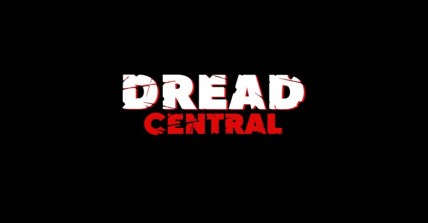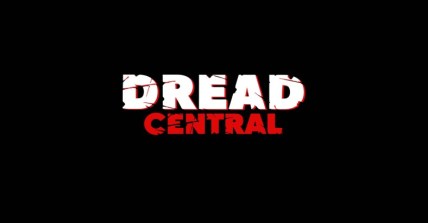Guillermo del Toro on YouTube Space House of Horrors: A Legendary Halloween; Upcoming Silent Hills Game

YouTube Space, Legendary Entertainment, and master filmmaker Guillermo del Toro have teamed up to deliver horror-inspired content onto the biggest video sharing platform in the world. The output is indeed impressive and worthy of the del Toro stamp of approval.
In celebration of his return to full-on horror with the upcoming Crimson Peak, master of ceremonies del Toro will select the scariest videos to come out of each region and provide a personal rough-cut creative consultation with the creators just in time for Halloween.
Dread Central, along with three other websites, was invited to the ultra-modern YouTube Space in Los Angeles, CA, to tour the new but not-so-modern sets and talk with del Toro about… well, just about anything! As you’ll learn when you read on, the film and art enthusiast was as delightfully verbose and informative as ever.
The talk was moderated by Jessica Chobot (YouTube, Nerdist).
Chobot: Let me just start off by thanking everybody for joining us here at the House of Horror’s YouTube Space LA for the roundtable with Mr. Guillermo Del Toro.
Del Toro: AKA Gerard Depardieu in Green Card.
(laughter)
Chobot: So let’s just start off… can you describe a little bit about the YouTube Space and also a little bit about your involvement, as well as the contest that you guys had?
Del Toro: Well, very much like the filmmakers, the idea was to have young designers come in and put their own spin on some of the elements, and some of you have visited the set on Crimson Peak. It’s sort of an “inspired by” but at a scale that is affordable and in the time and the space they have. But they are very talented designers. They created a variety of flavors, beautiful controlled palette, beautiful controlled textural sampler, and all I did was just give them my opinion like I would to the short filmmakers and say, ‘Well, maybe this, maybe that,’ but it’s all their doing, and I think they have a bright future ahead. If I was a young filmmaker and they allowed me to shoot in these sets, I would go nuts. They’re just fantastic.
Chobot: What are some of the artists that have inspired you as far as actual artwork specifically?
Del Toro: Well, you know, I’m a big fan of the symbolists. Carlos Schwabe, [Gustave] Moreau. Felicien Rops is a symbolist that I adore. The engravings and the paintings of Gustave Doré. My discipline as a kid was at the same time as movies; I learned voraciously about painters and sculptors, and at the same time I was learning about comic book guys. So in my mind, highbrow/lowbrow are engaged in a mud wrestling contest because I can say I’m inspired by Moreau or Rops and I’m also inspired by Bernie Wrightson or Richard Corbin or John Romita, many of them.
The main thing for me is that you need to train your eye to be able to recognize not only the styles but what makes them unique. That is a really good way of forming your visual vocabulary. I’m influenced by a lot of people from different periods.
Gupta: Do you think that’s really helped you? I think one of the amazing strengths and one of the things that really drew me to your work was your ability to create a world within a world. You take our world and you add another sort of dimension to it, and that is a fully fleshed world as well. So do you think with all of that knowledge you can draw from different periods and such?
Del Toro: Yeah, for example, Crimson Peak and Pacific Rim are lit very much influenced by Mario Bava or Richard Corben both, and the lighting is very extreme. You can have a green edge light here (gestures to his jaw) and a purple key light blah, blah, blah. At the same time, the shapes can be very conservative or academic or very architecturally beautiful.
It helps a lot in the way you interact with your designers. For example, we brought the Arabic language visually and the Hindu sense of design to a normally Celtic world on Hellboy 2. We said at one point that the Celtic knot, if you deconstruct it, can become a piece of Hindu architecture or a piece of Oriental design. We said, let’s not go to Celtic language for this thing; let’s go to another [place]. You can help guide those things.
Now the other thing is that I always say a good chunk of the storytelling is in the visuals, and it’s not just me saying it. I try to enforce it by the way you design things.
It was [Ludwig] Wittgenstein who said, ‘Your language is the limit of your universe,’ and the same is true visually. If you only grew up in bubblegum visuals and pop visuals, that’s the limit. You can only express yourself in ‘awesome’ and ‘dude,’ let’s say, but if you force yourself to expand your vocabulary visually into other areas, dissimilar as they may be, when you’re discussing a piece of design, you can bring the point of view or critique of all that baggage into telling the story…
Parra: Do you think that maybe your study across the different mediums is also why you work in so many different mediums?
Del Toro: The reality is that I think a lot of people think about what they do in a manner that seems designed or created and they are very carefully tailoring or contouring an image. I decided to live my life around middle 40’s, and I decided to live my life like when I was 10 years old. Which in the morning you are an astronaut, in the afternoon you’re a cowboy, and at night you’re an Indian. You don’t have to… I mean, let your life be your life, and enjoy it.
I try to collaborate with people I admire. Hideo Kojima on games because I want to learn from Hideo Kojima, with Pedro Almodovar producing because I want to learn from Pedro. When I want to produce, Andy Muschietti or Jorge Gutierrez or Juan Antonio Bayonne to learn from them, and how that defines who I am. Working with Chuck Hogan or Carlton Cruz is merely accidental. It comes from a huge appetite for life.
I really love life, and if you give me twelve donuts, I eat twelve donuts. If you give me 60 years of life, I will eat all those 60 years of life to the maximum of my abilities. It’s a decision.
Parra: Was there a massive difference, because you spoke of Hideo Kojima, for you directing a game versus a film?
Del Toro: We unfortunately were involved on a game that took about two and a half years’ pre-production with THQ that was called Insane, and then THQ went under before we could make the game, but I learned a lot there.
With Hideo we are still in the early stages. I don’t think the game will come out for another couple of years. So I won’t be able to speak of that experience, but speaking from the experience at THQ, it gave me a lot of tools that I didn’t have that were very useful in planning the projects that I’m doing.
I think five or six years ago, no more than eight years ago, the only thing I did say was I want to work in all the mediums I can because my belief is that in the next five to ten years everything will be monoplatform, meaning we will get our storytelling from a single platform. It will meld what we know about cable, what we know about downloading, what we know about analog, digital, it’ll become a single entity… you will always have independent films, and you will always have smaller stories that have the idiosyncrasy of their own medium, but in the larger constructions, which you can see now happening with cross-platform entertainment, you’re going to have a thing that you’re going to be able to enjoy in comic book form, animated form, continuous storytelling form in a way that is very, very fluid and malleable.
Chobot: Can you go into a little bit about the rough-cut workshop that you offered a lot of the up-and-coming directors?
Del Toro: All I can do is see their shorts trying to evoke what they are feeling for them and not judge but be a pal. Alejandro Gonzalez, Alfonso Cuaron, and myself are constantly critiquing each other’s work, and we are constantly being completely sincere. Disarmingly so.
(laughter)
And all you can do is be candid with the guys. Treat them like fully formed storytellers, not ‘oh, these are kids doing videos.’ Tell them what you think, sincerely, for good and bad, but try to give them something constructive in either of the iterations. Say, ‘Look, I think you can do this.’
Two days ago I was watching Jonas Cuaron’s, Alfonso Cuaron’s son, first full, live-action movie, and I was not saying, ‘Oh, you should have done…’ I mean, you tell them things that they can use. ‘I think you can push the sound design here. Put a radio echoing in the rocks, and maybe then we understand his idiosyncrasies because we can hear talk show hosts, etc.’ You know, things that are concrete. You’re not gonna go (in a gruff voice), ‘Well, film is a medium created by multiple subsequent images’. (back in the his normal voice) You’re going to tell them –
Chobot: – I just had awful flashbacks to art college.
(laughter)
Del Toro: But you want to say, ‘You can push this, this way, or do you have the material here to do this, if you make the scene a little shorter, or you can make it a little longer’ you give them useful things, you know? You hope to help them. I mean, I was helped as a young filmmaker by my friends so you try to be a friend.
Chobot: Was there anything you saw that they did that surprised you?
Del Toro: What surprised me was the variety of flavors. You have some shorts that are to the point and they are incredibly precise visually. Some others are incredibly precise thematically, and some of them are incredibly ambitious. You go, ‘WOW!’ And some of them are modest, but incredibly powerful. So you see the same series of sets, the same resources being applied in such a variety of ways.
When I used to teach film language in the university, I used to do something similar. I used to say to them, ‘What I want you to do is go and shoot this weekend on your video somebody making a fried egg. That’s it. You all have frying pans, you all have eggs, you all have oil in your house, hopefully you have gas. That’s all you need, that’s your production budget. One person, an egg, and a frying pan.’
People came in, and some of them had done a comedy, and some of them had done a film noir about a fried egg.
(laughter)
Within the limits of our budget and our time, you judge that talent accordingly.
Wilson: Have you found that sometimes fans have inferred something completely different than you intended when you made a film? Say you’ve read a comment or a review and thought, ‘Wow, that’s so profound; I wish I would have thought of that!’
Del Toro: Yeah, it has happened earlier more than later. It happened in a very strange way in the Moscow Film Festival with Cronos where a critic said to me that the movie was about Pushkin burning the idiosyncrasies of the middle class because an actor I had chosen to play the embalmer resembled Pushkin.
(laughter)
He said, ‘But I don’t understand why the man sleeps in a box…’
(more laughter)
So you know, yes, sometimes. But quite often what I find gratifying is the opposite, when people see things that a lot of people didn’t catch. There was a very beautiful review of Pacific Rim that a guy wrote that he went with his girlfriend that was slightly under specter, meaning she was seeing the movie in terms of shapes and colors, and she said Michael Murray has the blue streak because her memory was in blue. It was still haunting her, and that was the only time anyone noticed. So I was so happy for that. It’s so nice when you leave an Easter egg and somebody finds it.
McCabe: What’s your recipe for the perfect Halloween?
Del Toro: For me, being Mexican, I go with Day of the Dead… the Day of the Dead I used to have as a kid. You know, there’s no better chicken soup than your grandma’s chicken soup. For me the Day of the Dead that lives in my memory are the days when I would wake up early. I had saved money all year, like a kid does for Christmas, I saved it for Day of the Dead. I would go with my grandmother to the cemetery, clean off my grandfather’s grave, talk to him, she would pray, she would put flowers, and then we would go to a market that was called ‘Todos Santos,’ which means ‘All Saints.’ It’s All Saints Day, and it was the All Saints Market. It was a marketplace in a concentrated two or three blocks where they sold skulls and skeletons in plastic, rubber, clay, papier-mâché, and for me I saved my money to buy skeletons.
(laughter)
So I would come home with a handful of skeletons, and for whatever surreal reason, in Mexico the All Saints Market also used to sell bootleg Godzillas and bootleg Ultra-Mans, rubber versions of the gill man from the Creature from the Black Lagoon in pink, orange, yellow. It was the shopping mall that came out of my id. So that’s my idea of Day of the Dead.
Chobot: Well, I hate to wrap this up, but it looks like we’ve run out of time. So thank you very much.
Del Toro: Oh, my pleasure.
Chobot: Everyone, thank you for joining us at the roundtable. Thank you, YouTube Space LA and Legendary, and have a great Happy Halloween and/or Day of the Dead.

Categorized:News











